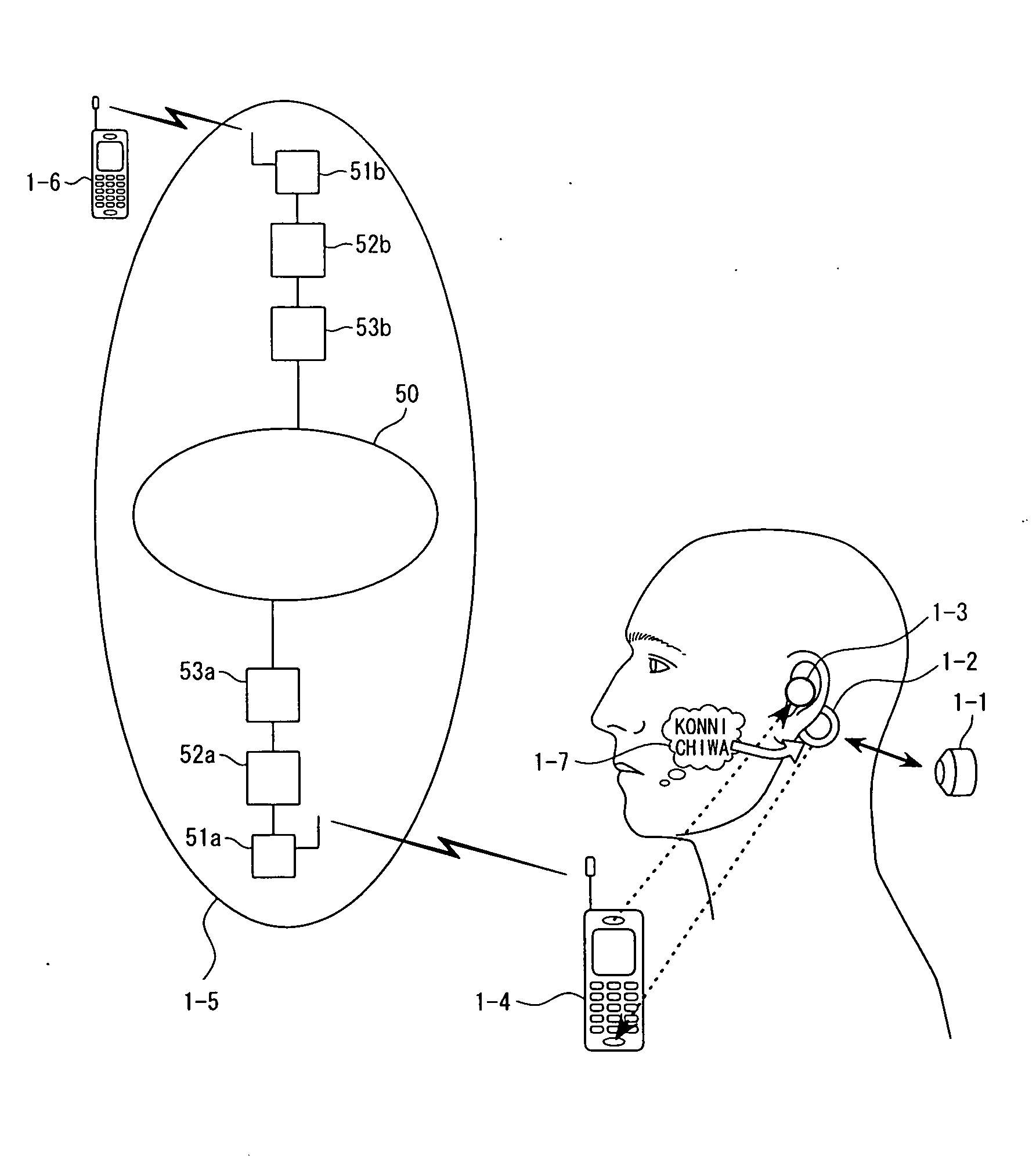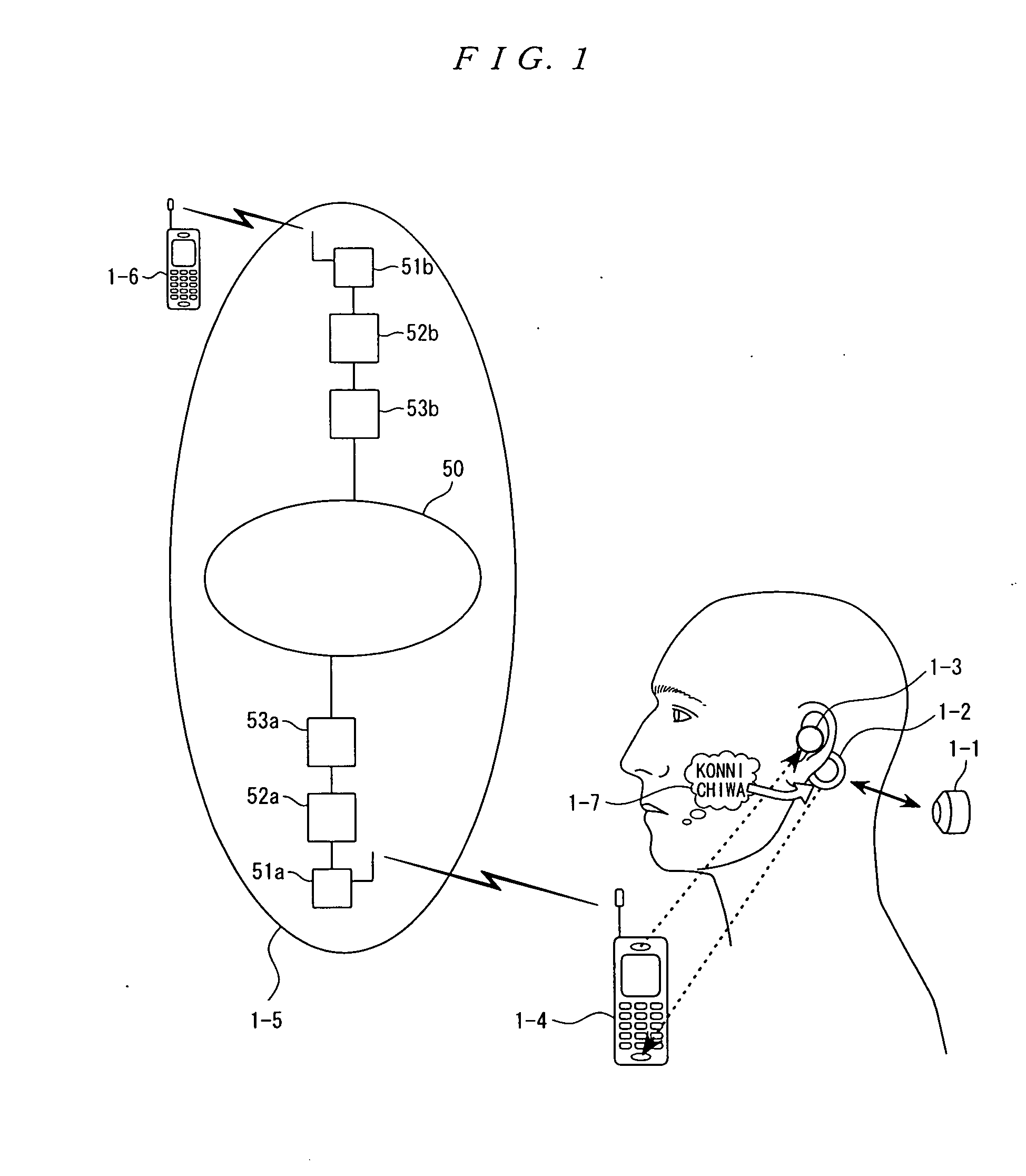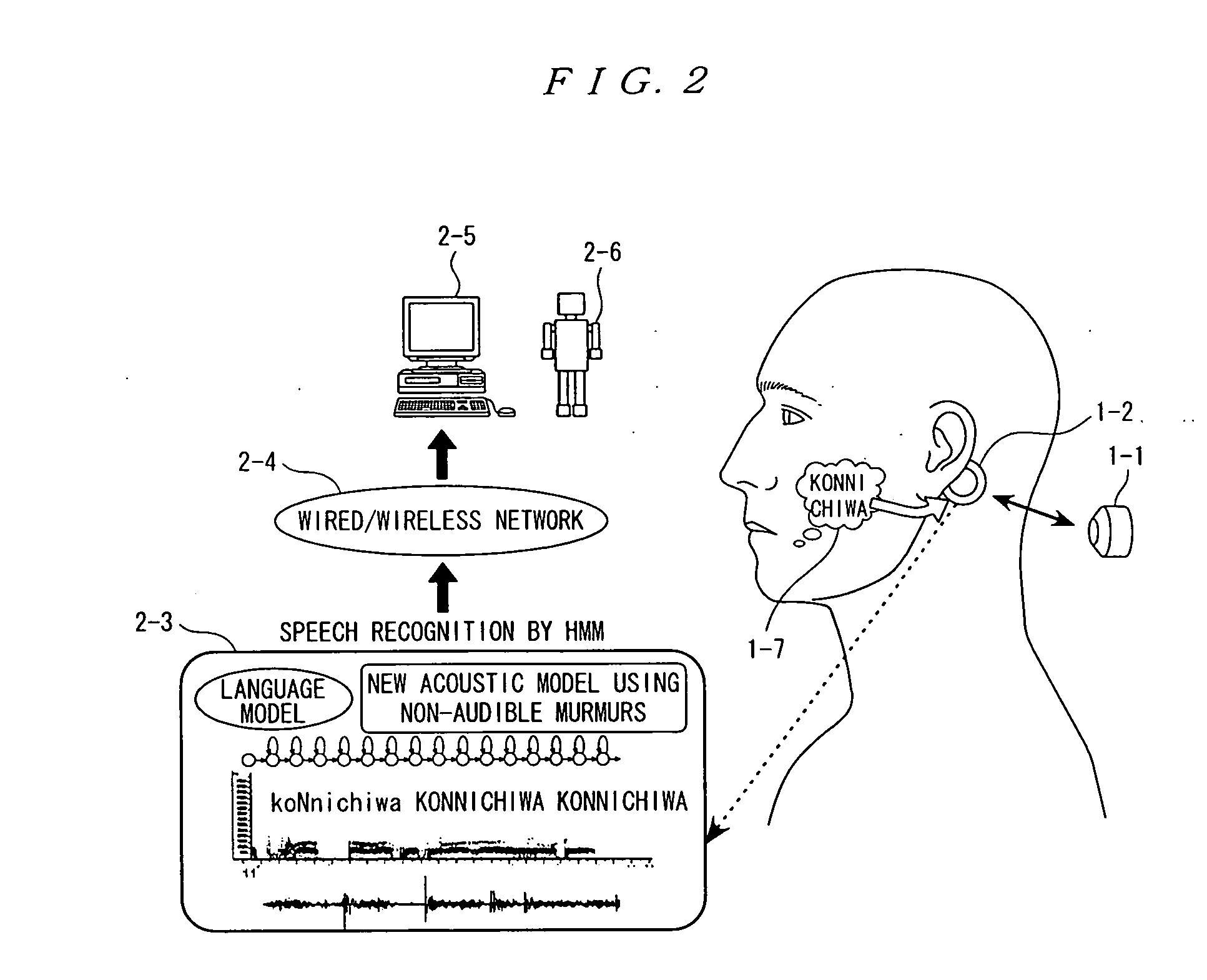Flesh conducted sound microphone, signal processing device, communication interface system and sound sampling method
- Summary
- Abstract
- Description
- Claims
- Application Information
AI Technical Summary
Benefits of technology
Problems solved by technology
Method used
Image
Examples
examples of application
[0145]Whereas the foregoing description referred to cases in which the microphone alone is fitted the sub-mastoid part, this exposes the microphone outside and accordingly would look awkward. In view of this point, the microphone may as well be configured integrally with a head wearing object to be fitted to the human head, such as spectacles, headphones, earphone, cap or helmet.
[0146]For instance, as shown in FIG. 20, the microphone 1-1 may be disposed at an end of a temple 31a of spectacles 31 to be hooked on an ear.
[0147]Or, as shown in FIG. 21, the microphone 1-1 may as well be disposed within an ear-piece 32a of headphones 32. Similarly, as shown in FIG. 22, the microphone 1-1 may as well be disposed at an end of the temple 33a of an earphone 33.
[0148]Further as shown in FIG. 23, a cap 34 and the microphone 1-1 may be configured integrally. Similarly, as shown in FIG. 24, a helmet 35 and the microphone 1-1 may be configured integrally. By integrating any of these items with the...
PUM
 Login to View More
Login to View More Abstract
Description
Claims
Application Information
 Login to View More
Login to View More - R&D
- Intellectual Property
- Life Sciences
- Materials
- Tech Scout
- Unparalleled Data Quality
- Higher Quality Content
- 60% Fewer Hallucinations
Browse by: Latest US Patents, China's latest patents, Technical Efficacy Thesaurus, Application Domain, Technology Topic, Popular Technical Reports.
© 2025 PatSnap. All rights reserved.Legal|Privacy policy|Modern Slavery Act Transparency Statement|Sitemap|About US| Contact US: help@patsnap.com



